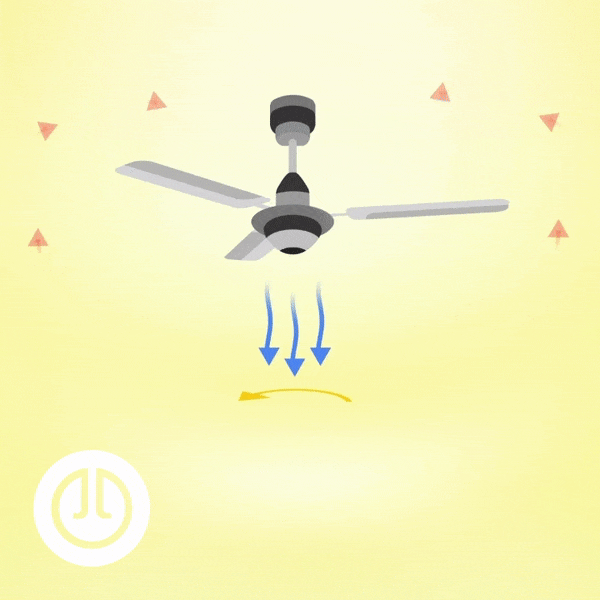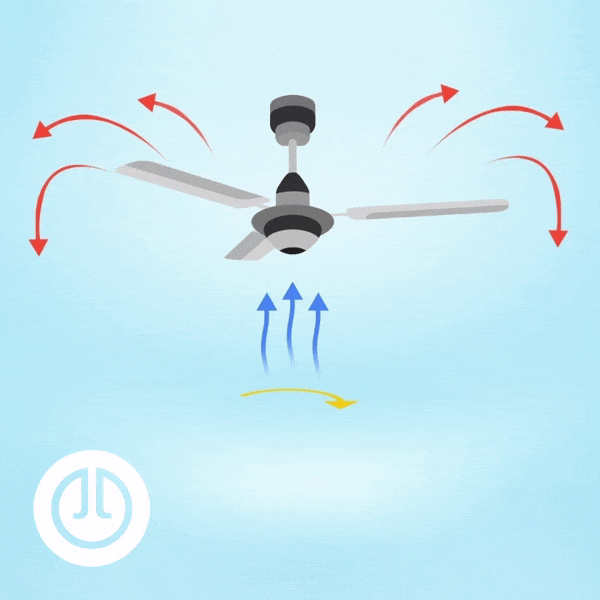

Save energy with ceiling fan
You might not thought so, but a ceiling fan can actually save you a lot of energy! A fan can provide much more than just a cool breeze in the summer. The winter mode on many fans helps to ensure warm air is distributed evenly during winter. Want to find out how this works and what other benefits ceiling fans have? Keep reading to find out!
How much can I save?
Heating, cooling and lighting your home can all cost a lot of money. A ceiling fan uses around 0.05 kWh per hour. This makes a ceiling fan much cheaper to run than an air-conditioner, which can use between 1.0 and 2.5 kWh per hour! If you leave a ceiling fan on for 8 hours per day, you use around 0.4 kWh per day. With an air-conditioning unit this is 12 kWh per day. If you start from the average kWh price of €0.58 (as of August 2022 in the Netherlands), this will cost €0.20 with a ceiling fan. By comparison, an air-conditioning unit will cost €6.95 per day. Start counting your savings!


How does it work?
Summer mode


Now you know that (most) ceiling fans have a summer and a winter setting, we will explain how to use it. When a ceiling fan is in summer mode, the blades turn anti-clockwise, causing the air to be blown straight down. This causes air to be moved around the room and blown over your skin, thus creating a cooling effect.
Winter mode


In winter mode, the fan will turn clockwise. This draws cold air up from the bottom of the room to the top through the fan blades. Warm air, which usually rises and stays at the top of a room, is then pushed downwards by the fan This ensures warm air is distributed more evenly across the room, meaning you can put your heating on a slightly lower setting. This will keep your toes warm and help you save money on your heating bills!
The main benefits at a glance
Ceiling fans also have other advantages! We have compiled a list of them for you here:
- They help to improve air circulation and temperature in a room
- Lampandlight ceiling fans also have a lighting and mood function
- Ceiling fans are much quieter than air-conditioning
- Ceiling fans can help to prevent mosquito bites, as they do not like strong air currents.
FAQ
- What do I need to consider when buying a ceiling fan?
You first need to make sure your ceiling is strong enough to support a ceiling fan. Ceiling fans are usually quite heavy items that don't stick to plasterboard very well, so make sure you have a sturdy ceiling! You also need to make sure that you choose the right size fan for the room you want to put it in, as fans that are too small will have a limited effect.
| No. of m² | Ceiling fan diameter |
| Up to 8 m² | 75 cm |
| 8 to 10 m² | 90 cm |
| 8 to 12 m² | 103 cm |
| 10 to 16 m² | 120 cm |
| 12 to 25 m² | 132 cm |
| 18 to 32 m² | 140 cm |
| 25 to 45 m² | 160 cm |
| 30 to 50 m² | 180 cm |
| more than 50 m² | Multiple ceiling fans recommended |
- What is the best location for a fan?
To get the most out of your ceiling fan, it should be placed at least 1.5 metres away from the wall. This will ensure optimal air flow throughout your room.
